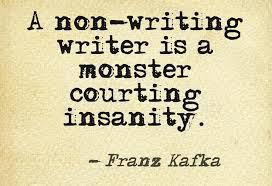Mira Prabhu's Blog, page 66
June 24, 2015
What is Synchronicity?
What is Synchronicity? “Jung, like the Chinese have believed for millenniums, thought that the world was one big connection, with everything related to everything else. This idea actually has scientific support with theoretical physics idea of entangled atoms. Einstein had a mystical side which emerged more in his elderly years.
When you think of it, Einstein’s life was mystical. How do you sit down at a desk and figure out that there must be black holes in the universe when no one at that time had seen a black hole?” Now read on….and thank you, Dr. Steven Fox.
 Originally posted on Dreams: Guide to the Soul:
Originally posted on Dreams: Guide to the Soul:
A woman dreamed that an ex-lover whom she had known for years were floating side by side together passively in a pool of water. They both were floating and were perfectly still. She somehow knew that he was going to die. Basically the dream was saying that their relationship died because it was drowned in emotion.
Over the years, she had an on and off relationship with him because he was a drug addict. The next day after this dream, she heard that he died from a drug overdose. From figuring the time she went to sleep and the approximate time he died, she believed she had this dream within 3 or 4 hours of his death.
She had a predictive dream of his death, which is one of the six major types of dreams in my world. Psychics tell me that traumatic events send out a stronger…
View original 308 more words


June 20, 2015
Gabriel Garcia Marquez on what gave him permission to write…QUOTES FOR WRITERS (and people who like quotes)
‘As Gregor Samsa awoke that morning from uneasy dreams, he found himself transformed in his bed into a gigantic insect…’ the line that metamorphosed Gabriel Garcia Marquez into a great writer. Thank you Bridget Whelan!
 Originally posted on BRIDGET WHELAN writer:
Originally posted on BRIDGET WHELAN writer:
 One night a friend lent me a book of short stories by Franz Kafka. I went back to the pension where I was staying and began to read ‘The Metamorphosis’. The first line almost knocked me off the bed. I was so surprised. The first line reads, ‘As Gregor Samsa awoke that morning from uneasy dreams, he found himself transformed in his bed into a gigantic insect…’ When I read the line I thought to myself that I didn’t know anyone was allowed to write things like that. If I had known I would have started writing a long time ago.
One night a friend lent me a book of short stories by Franz Kafka. I went back to the pension where I was staying and began to read ‘The Metamorphosis’. The first line almost knocked me off the bed. I was so surprised. The first line reads, ‘As Gregor Samsa awoke that morning from uneasy dreams, he found himself transformed in his bed into a gigantic insect…’ When I read the line I thought to myself that I didn’t know anyone was allowed to write things like that. If I had known I would have started writing a long time ago.Gabriel Garcia Marquez
photo credit: smile! via photopin(license)


June 18, 2015
Zadie Smith’s 10 Rules For Writing Fiction
Zadie Smith’s 10 Rules For Writing Fiction! Thanks Robert!
 Originally posted on 101 Books:
Originally posted on 101 Books:
The Guardian published White Teeth author Zadie Smith’s 10 rules for writing in 2010, and they’re pretty awesome.
When still a child, make sure you read a lot of books. Spend more time doing this than anything else.
When an adult, try to read your own work as a stranger would read it, or even better, as an enemy would.
Don’t romanticise your “vocation”. You can either write good sentences or you can’t. There is no “writer’s lifestyle”. All that matters is what you leave on the page.
Avoid your weaknesses. But do this without telling yourself that the things you can’t do aren’t worth doing. Don’t mask self-doubt with contempt.
Leave a decent space of time between writing something and editing it.
Avoid cliques, gangs, groups. The presence of a crowd won’t make your writing any better than it is.
Work on a computer that is disconnected from the…
View original 206 more words


June 17, 2015
Kids Aren’t Reading–And That’s Their Parents’ Fault
As Patterson says, “children without books translates to a world run by the shortsighted and the glib and the apathetic and the narrow-minded.” Read on…
 Originally posted on 101 Books:
Originally posted on 101 Books:
Children don’t be reading, and that’s their parent’s fault.
I’m always leery when I hear “a new study says,” but for what it’s worth a new study says that one in four students agree with the statement “My parents don’t care if I spend any time reading.”
According to Acculturated, one in six boys said they had never been given a book as a present and one in five said they had never been to a bookstore. That’s nuts!
View original 248 more words


June 16, 2015
When Trolls Wear Princess Dresses
Great advice from Jo Robinson: “Ignore the mean-spirited sods and treasure the wonderful friends that you do have. If what you share with the world is genuine, and coming from a good place inside your heart or mind, you’re on the right track.”
 Originally posted on Jo Robinson:
Originally posted on Jo Robinson:
We’re all allowed to be as mean as we want to trolls when they rear their ugly heads. It’s probably not a good idea though, and reporting and blocking the swine can be just as satisfying as having a nice little square of bubble-wrap to play with, if ignoring them is too much to ask. This is all very well, and nicely cut and dried. There is another breed around the internet too though, who somehow manage to be trolls “under the radar”. They like to show people up in “nice” ways, while at the same time appearing to be nice themselves – if you get my drift. I don’t buy this crap though. Unless someone openly attacks you or yours first, why would you be mean simply because you disagree with them? I’m not talking about the hilariously offensively filthy lurkers in the comments sections of some newsletters around…
View original 686 more words


20 Symptoms of Writeritis
WRITERITIS is defined as a persistent, maladaptive pattern of writing that leads to clinically significant impairment or distress, as manifested by six (or more) of the following within a single month: read on to self-diagnose! And thank you D. Wallace Peach and Chris Graham!
 Originally posted on Myths of the Mirror:
Originally posted on Myths of the Mirror:
As some of you know, a pervasive syndrome has troubled a segment of society for centuries. After years of research, the Diagnostic and Statistical Manual of Mental Disorders finally classified these symptoms under the diagnosis: Writeritis.
Writeritis is defined as a persistent, maladaptive pattern of writing that leads to clinically significant impairment or distress, as manifested by six (or more) of the following within a single month:
A marked craving for increased amounts of writing, and longer periods of time to write.
An unquenchable thirst for coffee.
Repeated efforts to cut down or control word count is unsuccessful.
Withdrawal occurs when writing is discontinued or suddenly reduced. Symptoms include shakiness, moodiness, and/or irritability.
A tendency to rapidly relapse into extreme patterns of excessive rewriting – even after periods of abstinence or control.
After writing, a compulsive urge to return and edit.
An inability to initiate household chores until a plot hole is…
View original 169 more words


June 13, 2015
Lady Gaga on making music, writing and creativity QUOTES FOR WRITING (and people who like quotes)
ha ha ha…Lady Gaga really goes for it with this quote…for me, I hear her saying that if you want to produce your very best as an artiste, you’ve got to fall deeply and irrevocably in love with your subject. And I agree! Thank you Bridget Whelan.
 Originally posted on BRIDGET WHELAN writer:
Originally posted on BRIDGET WHELAN writer:
 When you make music or write or create, it’s really your job to have mind-blowing, irresponsible, condomless sex with whatever idea it is you’re writing about at the time.
When you make music or write or create, it’s really your job to have mind-blowing, irresponsible, condomless sex with whatever idea it is you’re writing about at the time.Lady GaGa
photo credit: Lady Gaga VOGUE 2012 via photopin(license)


June 11, 2015
Lilith as Serpent and Symbol of Transformation
Susan Scott is South-African born; with a BA in Clinical Pyschology, and an abiding interest in the work of C.G. Jung, Susan is married with two adult sons. What brought the two of us together? Common interests and mutual affection. Please do check out her blog: gardenofedenblog.com.
I enjoyed Susan’s series of three posts on the fascinating light-and-dark persona of Lilith and she graciously allowed me to reblog them….this is her third and final post (originally posted on June 1 2015 on gardenofedenblog.com). Here goes….
 A reminder that I treat the myth of Lilith as just that, a myth, a powerful one that resonates today because of its psychological dynamic. Any ongoing dialogue with myths, dreams, stories, fairytales inter alia puts us back in touch with the deeper layers of the psyche, those inner forces that play themselves out on the world stage.
A reminder that I treat the myth of Lilith as just that, a myth, a powerful one that resonates today because of its psychological dynamic. Any ongoing dialogue with myths, dreams, stories, fairytales inter alia puts us back in touch with the deeper layers of the psyche, those inner forces that play themselves out on the world stage.
In the previous post we left Lilith brooding in the depths of the Red Sea. She felt her inner strength returning after what seemed an eternity, cleansed by her tears and the salt of the sea she now felt as salve; and her forging in the flames. It was time to end her isolation and return to the Garden of Eden to effect a change on the status quo.
In the most mysterious of ways she returns, disguised, as serpent, to beguile Eve to accept the apple and thereby disobey God’s admonition to not eat the fruits of The Tree of Knowledge of Good and Evil on pain of death and other dreadful punishments.
We know from the Creation story that Eve and Adam were expelled from Paradise and that women have been blamed ever after for this sinful act of accepting the fruit – the repercussions still felt today, even if unconsciously. I’ll write a later post about Eve and the temptation that was presented to her. But for the moment I want to negate that age-old myth of woman’s ‘sinfulness’ and say that Eve was the awakener for Adam, Lilith the awakener for Eve. To paraphrase Paul Tillich (Western theologian), the Fall represented ‘…a fall from the state of dreaming innocence…’ and awakening from potentiality into actuality; and that the ‘fall’ was necessary for the development of humankind, a symbol for the human situation, not a story of an event that happened ‘once upon a time’.
Can Lilith as serpent be a viewed as a harbinger of change and as symbol for transformation?
Our first reaction to the temptress may be one where we instinctively recoil in distrust and fear. We have an archetypal disposition to fear this highly dangerous creature with forked flicking fangs. Historically, the symbolism of the serpent has the association of sexual temptation, of being against God, subversive and evil.
Lilith shed various skins in the depths of the Red Sea, shedding her anger, shedding her pain and sadness, feeling the lessening of the bonds, becoming tighter, and emerged to offer Eve choice and voice. Lilith knew that Eve was restricted in the Garden. She knew that Adam and Eve were entirely dependent on G.d the Father and that they were naive and obedient children with no real freedom for growth within those boundaries.
Lilith can be seen as a trailblazer in that she refused to remain repressed in the depths of the Red Sea. The brutal injury to her psyche from being expelled from the Garden for expressing herself almost broke her. The dark had served her well and for long and she knew her time had come. She was in touch with her anger and pain and stepped out from that place of extremity in her urge for healing and wholeness, never wholly achieved perhaps; but each little bit of understanding of the dark feminine within each of us, man and woman, brings us closer to wholeness and healing, individually and collectively. She challenged the patriarchal view that women were to be ‘obedient’. She donned the guise of serpent. The older paradigm of being in bondage in the depths of the Red Sea was a skin to be shed – it was too constricting, restricting; and its origins were blatantly unjust. There was no more symbolic way than to put on a new skin and arrive as serpent, the wisest of the creatures. She would live life in abandon but not in abandonment.
We too face trials and tribulations and long to be bathed in the light, to be comforted and mothered in loving arms. We’ve all experienced times when we’ve felt sick, tired, betrayed, disappointed. We’re vaguely aware of the resentments building up inside us like a pressure cooker, or we feel our hearts hardening or closing down. The mothering that we yearn for a these times – some other to be a container for our sadness – may be unavailable. We need to look deep inside ourselves to find a way to acknowledge those dark energy bearing feelings of hopelessness and despair, rage, anger and woundedness. Our feelings and emotions are not to be dumbed down.
Many times our energy is not a polite one. It is the sort of energy used by Rosa Parks in Montgomery, Alabama who refused to give up her seat on a bus for white men in 1955, a forerunner in challenging the legality of segregation. The Black Sash here in South Africa comprised of women started this movement in 1955 to protest against coloured people (inter alia) not being allowed to vote. Malala Yousafzai defied the Taliban edict of banning girls from receiving an education and took a bullet to her head.
We hiss loudly when we see gender discrimination, littering, undue use of plastic bottles, rape and mutilation of not only women and children, but of our land and sea. We hiss at those in the corridors of power who have only their profit line as goal. We’re doing a great deal of hissing and spitting at what goes on on our country under the leadership of our president and his sychophants – corruption is rampant and the use of tax payers money is used for the most nefarious purposes …
The feminine principle stands for all that is life-giving as well as life destroying, paradoxical though that is. It stands for chaos from which order emerges in a new transformative form. It is both joyful and grieving. It is dark and fecund, like the soil of the earth. It embraces ALL in life and in death. Pain and suffering, sorrow, grief, anger, destruction, wildness, non- conformity, death and darkness are all embraced by Lilith. She also embraces compassion, joy, creativity, light, playfulness, mothering, nurturing, birthing, ugliness and beauty. She devours and she transforms. Nothing is meaningless to her. She knows that ALL is part of the whole of life and death. Wanting only the good and light and the heights is an awful denial of the depths.
There is much in the literature where the serpent is revered: for example –
Aesculapius, the ancient Roman god of healing, is symbolised by two serpents representing the principles of sickness and healing, entwined around his staff. Serpents were renowned for their ability to seek out healing herbs and plants for treatment off illness in the population.
Hippocrates (460 BC) the father of western medicine, is represented to this day as a healer carrying a staff, around which is wound the serpent. My husband wears such a tie on which this emblem is.
 The story of the Buddha tells how, after his many and various terrifying trials and tribulations brought on by Mara, he met his greatest trial while sitting under the Bo tree. Mira and her Furies sent a thunderbolt down from the sky to strike him down dead. But, at the ultimate moment the cobra, the King of Serpents, emerged from the shadow/darkness to offer the Buddha its hood for protection – which he accepted.
The story of the Buddha tells how, after his many and various terrifying trials and tribulations brought on by Mara, he met his greatest trial while sitting under the Bo tree. Mira and her Furies sent a thunderbolt down from the sky to strike him down dead. But, at the ultimate moment the cobra, the King of Serpents, emerged from the shadow/darkness to offer the Buddha its hood for protection – which he accepted.
That which can kill can also cure. By bringing Lilith out of the shadows and acknowledging all sides of her, is a step towards healing and wholeness.
Follow Blog via Email
Enter your email address to follow this blog and receive notifications of new posts by email.
Click the buttons below to SHARE if you liked this post.
Click here to leave a COMMENT


June 8, 2015
Lilith in Exile
Susan Scott is South-African born; with a BA in Clinical Pyschology, and an abiding interest in the work of C.G. Jung, Susan is married with two adult sons. What brought the two of us together? Common interests and mutual affection. Please do check out her blog: gardenofedenblog.com.
I enjoyed Susan’s series of three posts on the fascinating light-and-dark persona of Lilith and she graciously allowed me to reblog them….this is the second of those three (originally posted on 25 May 2015 on gardenofedenblog.com). Here goes….
 Please note that I’m regarding the myth of Lilith as just that, a myth. Myths and fairy tales, legends and stories from time past and present, have something of the eternal about them and speak to contemporary issues that we face in our daily lives.
Please note that I’m regarding the myth of Lilith as just that, a myth. Myths and fairy tales, legends and stories from time past and present, have something of the eternal about them and speak to contemporary issues that we face in our daily lives.
Lilith (first wife of Adam in the Garden of Eden according to the Midrash – see previous post) was banished to the depths of the Red Sea to be never seen or heard of again. In one fell swoop, all that she had known, unity in the Garden, was ripped from her.
We’ve all experienced those dreadful times when we’ve been utterly lost in our grief and sadness; personal illness or that of our loved ones; when life is a constant uphill battle and the inner and outer worlds seem to conspire against us.
Sometimes, when in crisis, it is important to do nothing for a while and just sit in the awfulness of it. It is not the time to jump out of the fire to avoid the burning, but to endure and sit in the flames. It is not the time to frantically search for answers, immediate resolution. It is a time for no-action, patience, endurance.
I see Lilith in her exile, in the flames, sitting, with her knees drawn to her chest, her chin resting on her knees, her arms and hands wrapped around her legs. She sits; she doesn’t move. She knows she has to be here; now is not the time for her to escape. For the moment she must just sit, in the flames, and resist the temptation to jump out of the fire and not be burned. She must be burned. But the fire slowly strengthens her. She kindles the fire adding new branches to the furnace to keep the flames burning. She is kind to the fire. She feels akin to it. She stirs the ash. Perhaps she is reminded of things of beauty that were fashioned after being in the fire, beautiful crystal glass work, ornamental beads, clay pots, beautifully crafted and fired, made from the same substance as she. She feels that she is slowly being forged and fashioned, that the fire is strengthening and purifying her. Perhaps she wonders in some way if this is an alchemical process, one that takes a long time and furthermore, she knows not what lies in store for her. She feels in the absolute stillness of doing nothing, a dynamism. She senses the paradox in this, knows that stillness and movement somehow belong together even if they appear to be completely opposite to each other. She feels her blood quicken in some barely discernible way. Her frozen heart is melting. She feels a sharpening of wits, while at the same time a lessening of her previous bonds. She feels looser yet tighter at the same time. Her perceptions and attitude change. She sees that there is more. It seems to be out of her grasp but worthwhile reaching for and waiting for.
Lilith is in the fire and also in the depths of the Red Sea, wet, not only from those watery depths, but also very much from her tears. Tears of rage, frustration, anger and deep, deep sadness at her plight. How in the name of heaven did it come to this? A life of mutual joy and co-operation with Adam was not to be. She was rejected not only by him, but because she used His ineffable name in her rage (according to the legend), she was cast down, discarded, exiled and thus thrown upon herself. Perhaps from her personal experience of rejection, surely the deepest wound to her psyche, she learned never to be the instrument of rejection, hurt and wounding. Her own wounding showed her the path. From her extreme anger, disillusionment and sadness, there was a glimmer of the potential of its opposite, that of compassion and joy.
We are all daughters of Lilith and Eve; they are present in our modern psyche. We feel annihilated sometimes, invisible, unworthy, not free to act or choose, to remain submissive and demure. We lose touch with our earthy and passionate nature, our need for solitude sometimes, our connection with the dark moon.
Highly charged emotions are valuable in that they are meant to disturb us, so that we do not ignore them; that they are brought out of the festering dark. The deepest work is usually the work on the very darkest corner of our souls. Do not reject the corner stone, those other unknown parts of one’s self. ‘The stone which the builders rejected has become the corner stone’ (OT Psalms 118 vs 22). Destructive tendencies such as self-sabotage can be transformed into something more refined and spontaneous and joyous. Reflection is never easy, yet it is work worthy of the effort for the rising consciousness of the dark feminine and for unity to once more be re-gained.
 Like all archetypes, Lilith has two polarities. We may be inclined to call one side positive, the other negative, but this is not wise as it is a value judgment. All modalities of Lilith are experienced within ourselves, her dark and light, her manic and depressive moods, the sinner and the saint, her strengths and vulnerabilities, her wildness and her conformity. The sun and moon, seeming opposites, belong with each other.
Like all archetypes, Lilith has two polarities. We may be inclined to call one side positive, the other negative, but this is not wise as it is a value judgment. All modalities of Lilith are experienced within ourselves, her dark and light, her manic and depressive moods, the sinner and the saint, her strengths and vulnerabilities, her wildness and her conformity. The sun and moon, seeming opposites, belong with each other.
Follow Blog via Email
Enter your email address to follow this blog and receive notifications of new posts by email.
Click the buttons below to SHARE if you liked this post.
Click here to leave a COMMENT


June 7, 2015
Guest Post: I’m A Published Author, But No One In My Family Cares!
What happens when you finally publish your book and no one close to you gives much of a damn? Read Joseph Rathgen’s interesting post below…as he concludes, “Recently, I received word that I have a second book contract. At dinner the other night, I mentioned it to my daughter. She just looked up at me, then said, “Wow, dad, that’s great…now can you please pass the salt?”
 Originally posted on The Author Who Supports:
Originally posted on The Author Who Supports:
 It takes so much work to make it…so what happens when nobody really cares?
It takes so much work to make it…so what happens when nobody really cares?
Getting published – it is what separates the published book author, novelist, poet, columnist or magazine article writer from the aspiring weekend blogger. It is also that grand and glorious moment when we leap up from our chairs and scream out for the whole world to hear: “I GOT PUBLISHED!”
What happens after that epic moment though may not be what we expect from our closest family and friends or even from our work colleagues. Subdued jubilation and a quick high five may be the only words of praise and admiration we receive at best.
So, how do we deal with that sudden success and at the same time the lack of enthusiasm from the people who we thought would be and should be our biggest cheerleaders?
It is a defining moment in any published, writer’s…
View original 786 more words








